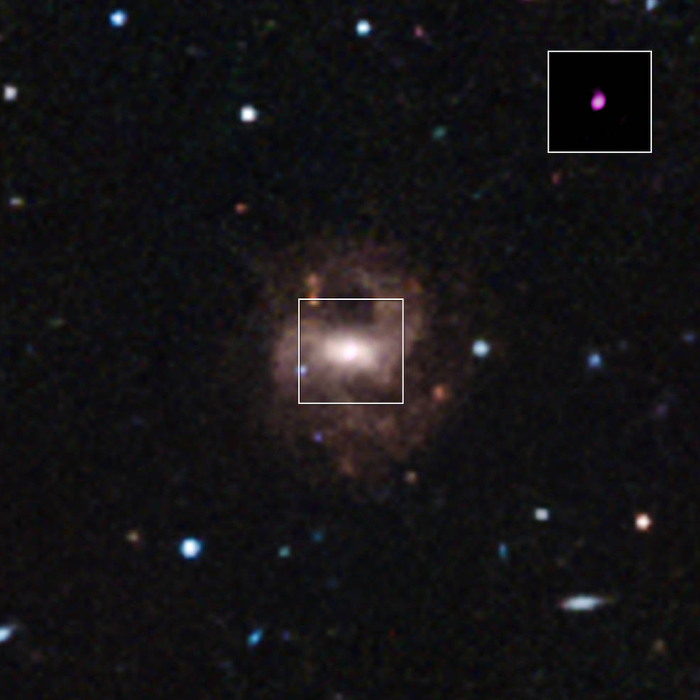
 Credit: NASA/CXC/Univ of Michigan/V.F.Baldassare, et al.; Optical: SDSS
Credit: NASA/CXC/Univ of Michigan/V.F.Baldassare, et al.; Optical: SDSS
Little Big Hole
Monstrous black holes, with masses of up to billions of times the mass of our Sun, lurk at the centers of galaxies. How did they get there, and how did they get so big? Perhaps these supermassive central black holes form from the gravitational collapse of extremely large clouds of gas; or perhaps they are built up by the mergers of many much smaller black holes, produced as the result of the explosive deaths of stars, containing only a few times the Sun's mass. So-called "intermediate mass black holes" may be the missing link between the stellar mass black holes and the supermassive variety. Now astronomers have found the lowest-mass "supermassive" black hole lying at the center of a galaxy named RGG 118. RGG 118, pictured above in a Sloan Digital Sky Survey image, shows signs of activity produced by the radiation emitted from material near a central supermassive black hole. An observation with the Chandra X-ray Observatory pinpointed a source of X-rays (shown in the inset image) at the center of the galaxy. Astronomers argue that this X-ray emission is produced by the superhot material currently being swallowed by the central black hole; if so, then the motions of the gas being accreted indicate that the black hole only has a mass of 50,000 solar masses. This would be less than half the mass of the previous lightweight supermassive black hole. Identification of a population of such lightweights could help astronomers understand how supermassive central black holes in galaxies grow and evolve.
Published: August 17, 2015
<
HEA Dictionary ● Archive
● Search HEAPOW
● Other Languages
● HEAPOW on Facebook
● Download all Images
● Education ● HEAD
>

Each week the HEASARC
brings you new, exciting and beautiful images from X-ray and Gamma ray
astronomy. Check back each week and be sure to check out the HEAPOW archive!
Page Author: Dr. Michael F. Corcoran
Last modified Monday, 26-Feb-2024 17:11:22 EST


